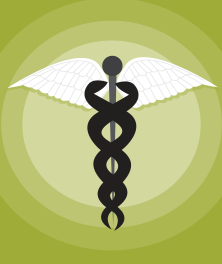Contact Information

- Division
- Allied Health
- Dean
- Nancy James

- Division Office
- RN1-101, Rocklin Campus

- Department Phone
- (916) 660-8300
Overview
Health Science courses are primarily designed as first responder basic life support training for the fire service, emergency medical services and health care professions. Other courses in this area are intended to improve or update the skills of individuals providing emergency and primary health care services.
Faculty
Wende D. Fortner
Professor, Health Sciences
B.S.N., Humboldt State University
M.S.N., California State University, Sacramento
F.N.P., University of California, Davis
Kristin Hammond
Assistant Professor, Health Sciences
Brianna Nathaniel
Professor, Health Sciences
B.A., University of California, Santa Barbara
Robert Riley
Assistant Professor, Health Sciences
B.S., California State University, Sacramento
M.S., California Sate University, Long Beach
Health Sciences/Emergency Medical Technician Advisory Committee
- American Medical Response, Sacramento and Placer Counties, CA
- Dignity Health Care, Sacramento and Placer Counties, CA
- Kaiser Health Foundation
- Medic Ambulance, Sacramento, CA
- Placer Unified High School District, Auburn, CA
- Rocklin Fire Department, Rocklin, CA
- Roseville Fire Department, Roseville, CA
- Sacramento City Fire Department, Sacramento, CA
- Sacramento Metro Fire District, Sacramento, CA
- Sutter Health Care, Sacramento, CA
Degrees/Certificates
Emergency Medical Sciences
Emergency Medical Sciences
AS Degree and/or Certificate of Achievement
The purpose of this proposal is to help prepare the Sierra College student for an entry-level Emergency Medical Technician (EMT) position and to help advance the careers of those already in the field who have received noncredit training and/or non-degree educational preparation thus far. The need for the program is based on the demand by employers (both public and private) and on the increased level of college education and training required for entering or pursuing any career progression in the field. The California State EMS (Emergency Medical Services) Authority has maintained that state EMT licensing meet the standard of care requirements of the National Registry of Emergency Medical Technicians (NREMT) and the US Department of Transportation (USDOT). The National Standards requirement for EMT certification is recognized for reciprocal certification in 48 states. For the degree, students must fulfill the following major requirements with grades of “C” or better, complete a minimum of 60 degree-applicable semester units (12 of which must be completed at Sierra College) with a grade point average of at least 2.0, and complete one of the following general education patterns:
- Sierra College Associate Degree Requirements (Local General Education)
- California General Education Transfer Curriculum (Cal-GETC)
Required Courses
| Code | Title | Units |
|---|---|---|
| HSCI 0002 | Emergency Medical Technician | 9 |
| HSCI 0003 | Medical Terminology | 3 |
| HSCI 0030 | Functional Anatomy and Pathophysiology For EMS Professionals | 3-4 |
| or BIOL 0055 | General Human Anatomy and Physiology | |
| Select 10 units from the following: | 10 | |
| Introduction to Allied Health | ||
| Emergency Medical Responder | ||
| Introduction to Advanced Life Support | ||
| Abnormal Psychology | ||
| Psychology of Death and Dying | ||
| Alcohol, Drugs and Society | ||
| Total Units | 25-26 | |
Health Science
AS Degree
The curriculum in Health Science focuses on providing a broad base of knowledge and skills to support students’ development into competent health care professionals. The objective of the degree is to provide a foundation for continued study in Health Science or related field at a four-year college or university and for employment in the healthcare fields. Students will develop a breadth of understanding and skills in health science, human health and human physiology. The curriculum encompasses courses that are relevant to many healthcare careers including: health administration, occupational therapy, environmental health, clinical laboratory, dental hygiene, paramedic, registered nursing, respiratory therapy, physical therapy, and physician's assistant. For the degree, students must fulfill the following major requirements with grades of “C” or better, complete a minimum of 60 degree-applicable semester units (12 of which must be completed at Sierra College) with a grade point average of at least 2.0, and complete one of the following general education patterns:
- Sierra College Associate Degree Requirements (Local General Education)
- California General Education Transfer Curriculum (Cal-GETC)
Required Courses
| Code | Title | Units |
|---|---|---|
| BIOL 0005 | Human Anatomy | 5 |
| BIOL 0006 | Human Physiology | 5 |
| CHEM 0002A | Introduction to Chemistry I | 5 |
| HSCI 0002 | Emergency Medical Technician | 9 |
| HSCI 0003 | Medical Terminology | 3 |
| STAT C1000 | Introduction to Statistics | 4 |
| Select 6-10 units from the following: | 6-10 | |
| Terrorist Tactics and the Role of the First Responder | ||
| Microbiology | ||
| Financial Accounting | ||
| Financial Accounting II | ||
| Introduction to Chemistry II | ||
| Principles of Macroeconomics | ||
or ECON 0001B | Principles of Microeconomics | |
| Emergency Medical Responder | ||
| Introduction to Advanced Life Support | ||
| Advanced Emergency Medical Technician (AEMT) Didactic | ||
| Advanced Emergency Medical Technician - Clinical/Field Experience | ||
| Introduction to Public Safety Dispatch (ALso ADMJ 0088, FIRE 0080) | ||
| Principles of Nutrition | ||
| Basic Concepts in Physics | ||
| General Physics I and General Physics I Laboratory | ||
| Introduction to Psychology | ||
| Psychology of Death and Dying | ||
| Alcohol, Drugs and Society | ||
| Spanish for Public Safety | ||
| Spanish for the Healthcare Professions | ||
| Total Units | 37-41 | |
Required Courses:
| Code | Title | Units |
|---|---|---|
| HSCI 0053 | Paramedic - Advanced Life Support Part 1 | 10 |
| HSCI 0054 | Paramedic - Advanced Life Support Part 2 | 9 |
| HSCI 0055 | Paramedic Clinical Experience | 5 |
| HSCI 0056 | Paramedic Field Internship | 10 |
| Total Units | 34 | |
Emergency Medical Sciences
Certificate of Achievement
The purpose of this proposal is to help prepare the Sierra College student for an entry-level Emergency Medical Technician (EMT) position and to help advance the careers of those already in the field who have received noncredit training and/or non-degree educational preparation thus far. The need for the program is based on the demand by employers (both public and private) and on the increased level of college education and training required for entering or pursuing any career progression in the field. The California State EMS (Emergency Medical Services) Authority has maintained that state EMT licensing meets the standard of care requirements of the National Registry of Emergency Medical Technicians (NREMT) and the US Department of Transportation (USDOT). The National Standards requirement for EMT certification is recognized for reciprocal certification in 48 states. A certificate provides career technical skills, not equivalent to an associate degree.
Required Courses
| Code | Title | Units |
|---|---|---|
| HSCI 0002 | Emergency Medical Technician | 9 |
| HSCI 0003 | Medical Terminology | 3 |
| HSCI 0030 | Functional Anatomy and Pathophysiology For EMS Professionals | 3-4 |
| or BIOL 0055 | General Human Anatomy and Physiology | |
| Select 10 units from the following: | 10 | |
| Introduction to Allied Health | ||
| Emergency Medical Responder | ||
| Introduction to Advanced Life Support | ||
| Abnormal Psychology | ||
| Psychology of Death and Dying | ||
| Alcohol, Drugs and Society | ||
| HSCI 0051 | Advanced Emergency Medical Technician (AEMT) Didactic | 6 |
| HSCI 0052 | Advanced Emergency Medical Technician - Clinical/Field Experience | 3.5 |
| Total Units | 34.5-35.5 | |
Paramedicine
Certificate of Achievement
This Certificate of Achievement acknowledges the successful completion of the Sierra College Paramedic Program. Students must pass each course in sequential order before advancing to the next. Fulfilling the program's requirements equips individuals with the ability to sit for the National Registry of Emergency Medical Technicians examination. This certificate of achievement provides recognition for career technical skills in paramedicine; however, it is not equivalent to an associate degree.
Required Courses:
| Code | Title | Units |
|---|---|---|
| HSCI 0053 | Paramedic - Advanced Life Support Part 1 | 10 |
| HSCI 0054 | Paramedic - Advanced Life Support Part 2 | 9 |
| HSCI 0055 | Paramedic Clinical Experience | 5 |
| HSCI 0056 | Paramedic Field Internship | 10 |
| Total Units | 34 | |
Advanced Emergency Medical Technician (AEMT)
Skills Certificate
Designed to give students the knowledge and skills required to enter the Advanced EMT workforce. The focus is on the application of limited advanced life support (LALS) emergency medical skills relative to advancing a career in the field of prehospital care. This skills certificate will provide the technical career skills and AEMT certifications that are advanced occupation requirements and are recognized at the state and national levels. This skills certificate provides career technical skills not equivalent to an associate degree.
Required Courses:
| Code | Title | Units |
|---|---|---|
| HSCI 0051 | Advanced Emergency Medical Technician (AEMT) Didactic | 6 |
| HSCI 0052 | Advanced Emergency Medical Technician - Clinical/Field Experience | 3.5 |
| Total Units | 9.5 | |
Emergency Medical Technician
Skills Certificate
Designed to give students the knowledge and skills required to enter the EMT workforce. The focus is on the application of emergency medical skills relative to starting a career in the field of prehospital care. This skills certificate will provide the technical career skills and EMT certifications that are minimal occupation requirements and are recognized at the state and national levels. This skills certificate provides career technical skills not equivalent to an associate degree.
Required Courses
| Code | Title | Units |
|---|---|---|
| HSCI 0002 | Emergency Medical Technician | 9 |
| Total Units | 9 | |
Pre-Paramedic
Skills Certificate
Designed to provide the prerequisite knowledge required to be successful in a paramedic program course of study. Students are introduced to the paramedic skills and advanced life support protocols and will develop a strong baseline knowledge of medical terminology, human anatomy, physiology, and pathology. This skills certificate provides career technical skills; it is not equivalent to an associate degree.
Required Courses
| Code | Title | Units |
|---|---|---|
| HSCI 0003 | Medical Terminology | 3 |
| HSCI 0050 | Introduction to Advanced Life Support | 3.5 |
| HSCI 0030 | Functional Anatomy and Pathophysiology For EMS Professionals | 3-4 |
| or BIOL 0055 | General Human Anatomy and Physiology | |
| Total Units | 9.5-10.5 | |
Courses
Understanding course descriptions
HSCI 0002. Emergency Medical Technician
Units: 9
Advisory: Completion of HSCI 3, HSCI 7, and BIOL 55 or HSCI 30 with grade of "C" or better
Hours: 235 (131 lecture, 80 laboratory, 24 activity)
Provides knowledge and critical thinking skills necessary to deliver emergency medical care in a prehospital environment. Covers legal and moral aspects, scene safety, primary and secondary patient assessments, intervention and stabilization skills, proper use of emergency medical equipment, awareness of bloodborne pathogens and communicable diseases, recognition of signs and symptoms, and pathophysiology of medical emergencies and traumatic injuries. Includes practical hands-on skills training and interactive simulations. Includes certification for American Heart Association (AHA) CPR professional and bloodborne pathogen and infection control. Tactical EMS training and state certification in "TEMS First Responder Operations". Clinical experience is an assigned field and/or clinical observation. Attendance and participation are mandatory; a cumulative score of 80% on all written quizzes and exams, and a passing score on all practical skills testing are required for qualification for national and state EMT certification. Meets updated National Education Standards for EMT curriculum, and all requirements of the California Code of Regulations Title 22, the California EMS Authority, and the National Registry of Emergency Medical Technicians (NREMT). Upon successful completion, the student is eligible to take the NREMT EMT examination and qualify for a California State EMT certification. Students must be 18 years of age at the start of the course; provide a Tuberculosis (TB) Blood Test (QuantiFERON) or a negative chest x-ray; provide proof of immunizations for Mumps, Measles, Rubella (MMR); Varicella zoster-vaccination or positive titer; Hepatitis B series completion and titer, or Hepatitis B series in progress and a signed declination; Diphtheria, Tetanus, and Pertussis (Tdap); current influenza vaccine; Student is required to take a drug screen test demonstrating the absence of evidence of controlled substance use and provide criminal background screening satisfying the requirements of the State EMS Authority and EMT program clinical providers. (CSU)
HSCI 0003. Medical Terminology
Units: 3
Hours: 54 lecture
Comprehensive overview of the medical language using a systems oriented approach of the human body. Covers the formation, spelling, correct pronunciation, and proper usage of common medical terms and abbreviations. The terminology is relative to the medical applications used within a wide variety of health care professions. Course meets the prerequisite requirements of numerous allied health care training programs, and is highly recommended as a preparatory course for EMT, Paramedic and Nursing programs. (CSU)
HSCI 0007. Emergency Medical Responder
Units: 3.5
Hours: 80 (62 lecture, 18 laboratory)
Provides the knowledge and practical skills training required to be certified as an Emergency Medical Responder (EMR). Comprehensive training includes oxygen therapy and delivery, basic airway adjuncts, positive pressure ventilation, bleeding control, extremity splinting and spinal immobilization. Emphasizes a systematic patient assessment, critical thinking and medical interventions at the first responder level. Provides the mandated training for recognizing the risks of bloodborne pathogens, infection control, body substance isolation (BSI), and personal protection equipment in accordance with OSHA standard 29 CFR 1910.1030 specific to the EMS first responder and healthcare professional. Upon completion with a grade of "C" or better, students are issued a certificate of completion and are eligible to apply for an EMR certification through the state of California. (CSU)
HSCI 0012. Professional CPR and Infection Control
Units: 0.5
Hours: 16 (10 lecture, 6 activity)
Provides the American Heart Association (AHA) Basic Life Support/CPR certification for Healthcare Providers. Also provides mandated training for recognizing risks of bloodborne pathogens, infection control, body substance isolation (BSI), and personal protection equipment in accordance with OSHA standard 29 CFR 1910.1030 specific to the healthcare professional. (not transferable)
HSCI 0030. Functional Anatomy and Pathophysiology For EMS Professionals
Units: 3
Prerequisite: Completion of HSCI 2 with grade of "C" or better, or current state certification as an Emergency Medical Technician
Hours: 54 lecture
Designed for students pursuing careers in Emergency Medical Services (EMS) and advanced levels of prehospital care. Provides overview of functional anatomy, symptomology and pathophysiology of disease, medical emergencies, and effects of traumatic injuries. EMS management and review of field treatment protocols enhance ability to treat and stabilize emergency medical situations in the field. (CSU)
HSCI 0050. Introduction to Advanced Life Support
Units: 3.5
Prerequisite: Completion of HSCI 2 with grade of "C" or better, or a similar state certified EMT course; must be currently certified as an EMT in the state of California or certified through the National Registry of Emergency Medical Technicians (NREMT)
Advisory: Completion of HSCI 3 and BIOL 55 with grades of "C" or better
Hours: 80 (60 lecture, 20 laboratory)
Introduction to the advanced knowledge and critical thinking skills necessary to prepare for a paramedic program, advanced emergency medical technician (AEMT) training, registered nursing (RN), physician assistant (PA), and other allied health training programs. Assessment based course focuses on advanced life support (ALS) interventions; electrocardiogram (EKG) recognition and interpretation; pharmacology; advanced airway management; intravenous and intraosseous fluid and drug infusion; basic anatomy, physiology and principles of pathophysiology; introduction to local, state and national ALS protocols. Practical skills labs focus on improving patient assessment techniques, managing realistic case study scenarios, and introduction to AEMT, paramedic skills, protocols, and interventions. Course format is interactive and simulates the intense pace and discipline required of AEMT, paramedic and other allied health vocational training. Mandated student participation, passing of written exams and practical skills assessments required for completion. Course is approved for eighty (80) hours of instructor based continuing education (CE) by the National Registry of Emergency Medical Technicians (NREMT) and as a California state EMS CE Provider. (CSU)
HSCI 0051. Advanced Emergency Medical Technician (AEMT) Didactic
Units: 6
Prerequisite: Current AHA Healthcare Provider CPR certification and current California State EMT certification required
Advisory: Completion of HSCI 3, HSCI 30, HSCI 50, and BIOL 55 with grades of "C" or better; eligibility for ENGL 11
Hours: 144 (90 lecture, 54 laboratory)
Provides academic preparation and psychomotor skills training to prepare the student for HSCI 52, the Advanced Emergency Medical Technician (AEMT) clinical and field Internship. Successful completion of HSCI 51 and HSCI 52 make the student eligible to take the National Registry of EMTs (NREMT) Advanced EMT certification exam. Topics include Limited Advanced Life Support (LALS) knowledge, application and problem solving skills necessary to work as an AEMT in the Emergency Medical Services (EMS) field for an ambulance service, fire department, hospital emergency department or other specialized service. A "C" letter grade, as well as successful completion of the HSCI 51 exit exam and psychomotor skills test, are required to be eligible for HSCI 52. This course conforms to the National EMS Scope of Practice Model and the EMS National Education Standards, complies with Title 22, Division 9, Chapter 3 of the California State Code of Regulations, and is approved by the Sierra Sacramento-Valley Emergency Medical Services Agency. Field trips or off-campus lab assignments are required. (not transferable)
HSCI 0052. Advanced Emergency Medical Technician - Clinical/Field Experience
Units: 3.5
Prerequisite: Completion of HSCI 2 and HSCI 51 with grades of “C” or better, or equivalent training; HSCI 52 must be completed no more than seven months after the completion of HSCI 0051; current AHA Healthcare Provider CPR certification and current California State EMT certification required; must submit to a drug screen test demonstrating the absence of any evidence of controlled substance use and provide a criminal background check satisfying the requirements of the State EMS Authority, and the AEMT program clinical providers; must provide two negative TB tests by two-step PPD process, or a negative chest x-ray; provide proof of immunizations for Mumps, Measles, Rubella (MMR); Varicella zoster-vaccination or positive titer; Hepatitis B status screening or signed declination; Diphtheria, Tetanus and Pertussis (Tdap); current influenza vaccine
Advisory: Completion of HSCI 3, HSCI 30, HSCI 50 and BIOL 55 with grades of "C" or better; eligibility for ENGL 11
Hours: 200 laboratory
Provides the supervised clinical and field experience training requirements for Advanced Emergency Medical Technician, at the limited advanced life support (LALS) scope of practice. Successful completion of HSCI 51 and HSCI 52 makes the student eligible to take the National Registry of EMTs (NREMT) Advanced Emergency Medical Technician (AEMT) certification exam. Course is approved by the Sierra Sacramento Valley - Emergency Medical Services (EMS) Agency, and conforms to the National EMS Scope of Practice Model, the EMS National Education Standards and complies with Title 22, Division 9, Chapter 3 of the California State Code of Regulations. (not transferable)
HSCI 0053. Paramedic - Advanced Life Support Part 1
Units: 10
Prerequisite: Current California State Emergency Medical Technician (EMT) Certification; current American Heart Association Healthcare Provider CPR certification
Advisory: Completion of HSCI 30, HSCI 50 or BIOL 55, and HSCI 3 with grades of "C" or better
Hours: 252 (144 lecture, 108 laboratory)
Part one of a four-part series of courses providing the foundational knowledge required for the paramedic level of care in the Emergency Medical System (EMS). Theory and psychomotor application of prehospital care including the anatomy and physiology of respiratory and cardiovascular disease processes, medical disorders, and emergencies across the adult life span. Students will learn to identify abnormal physical assessments and apply appropriate priority interventions. Competencies in accessing and evaluating patient monitoring technologies, integrating advanced life support theories to perform paramedic skills related to prehospital care standards for medical emergencies and disorders. Students will receive certified training in Advanced Cardiac Life Support (ACLS). (CSU)
HSCI 0054. Paramedic - Advanced Life Support Part 2
Units: 9
Prerequisite: Completion of HSCI 53 with grade of "B" or better; current California EMT Certification and AHA BLS CPR Certification
Hours: 248 (122 lecture, 126 laboratory)
Part two of a four-part series of courses providing the foundational knowledge required for the paramedic level of care in the Emergency Medical System (EMS). Theory and psychomotor application of prehospital care including the anatomy and physiology related to body systems and the impact of trauma, disease processes, and medical disorders for common obstetric, pediatric, and geriatric patient emergencies. Students will learn to identify abnormal physical assessments and apply appropriate priority interventions. Competencies in accessing and evaluating patient monitoring technologies, and integrating advanced life support theories to perform paramedic skills related to prehospital care standards for traumatic injuries and medical emergencies. Students will receive certified training in Pediatric Advanced Life Support (PALS)/Handtevy or equivalent. (CSU)
HSCI 0055. Paramedic Clinical Experience
Units: 5
Prerequisite: Completion of HSCI 54 with grade of "B" or better; current California EMT Certification, Current AHA BLS, ACLS and PALS Certification/equivalent
Hours: 234 (18 lecture, 216 laboratory)
Part three of a four-part series providing the foundational knowledge required for the paramedic level of care in the Emergency Medical System (EMS). The Clinical section provides students with an acute clinical care experience under the direct supervision of a Registered Nurse and Paramedic preceptor. The student will identify abnormal physical assessments and be able to apply appropriate priority interventions. Students will be exposed to dynamic clinical environments including the emergency department and labor and delivery. Supervised clinical training on high-fidelity manikin simulation. (CSU)
HSCI 0056. Paramedic Field Internship
Units: 10
Prerequisite: Completion of HSCI 55 with grade of "B" or better; current California EMT Certification, AHA BLS, ACLS, PALS Certification/equivalent
Hours: 540 laboratory
Part four of a four-part series providing the foundational knowledge required for the paramedic level of care in the Emergency Medical System (EMS). The field Internship section provides the paramedic student the culminating field experience minimum of 480 hours on an Advanced Life Support (ALS) ambulance and/or fire engine. The paramedic student will work in a variety of patient care situations under the direct supervision of a Paramedic Preceptor and will demonstrate the ability to perform an assessment, identify abnormal physical findings, and be able to apply appropriate priority interventions while working in dynamic field environments. (CSU)
HSCI 0080. Introduction to Public Safety Dispatch
Units: 3
Also known as ADMJ 78 and FIRE 80
Hours: 54 lecture
Overview of the critical role of the Public Safety Dispatcher as first point-of-contact for coordinating emergency responses; exploration of advancements in telecommunications and emergency notifications systems; use of proper radio codes and crisis-intervention techniques used to calm and communicate with distraught callers; awareness of job requirements and hiring process for career pathways in Public Safety Dispatching. (CSU)
HSCI 0600. Emergency Medical Technician Continuing Education
Unit: 1
Prerequisite: Must be eligible for certification or re-certification as an EMT in the State of California
Hours: 24 (16 lecture, 8 laboratory)
Provides 24 hours of continuing education required for state re-certification as an Emergency Medical Technician (EMT). Reviews current standards for airway management and ventilation, patient assessment, cardiac care and resuscitation, injury management and stabilization, legal and ethical issues, vital signs, assisting with medication administration, and review of the updated and optional EMT scope of practice. Students update their psychomotor skills and demonstrate proficiency in organized skills labs. Students that successfully complete the course receive a certificate of completion. May be repeated for credit to meet legally mandated continuing education and re-certification requirements. (pass/no pass grading) (not degree applicable)
Program Student Learning Outcomes (PSLOs)
- Demonstrate and confirm knowledge of current industry standards by successfully completing all course requirements and successfully passing the certifying written examination of the National Registry of Emergency Medical Technicians.
- Demonstrate effective and clear communication skills required for patient care, completing critical skills and incident management, using both verbal and written medical summarizations.
- Demonstrate ability to perform a primary assessment on a medical or trauma patient, manage a simulated emergency scenario, and determine the appropriate critical care interventions.
- Determine the role of legal, ethical, and professional standards of conduct within the Emergency Medical Services and other health care professions.
- Demonstrate proficiency of all required practical skills as mandated to qualify for the National Registry of Emergency Medical Technicians Certification and for EMT and EMR licensing with the State of California.



